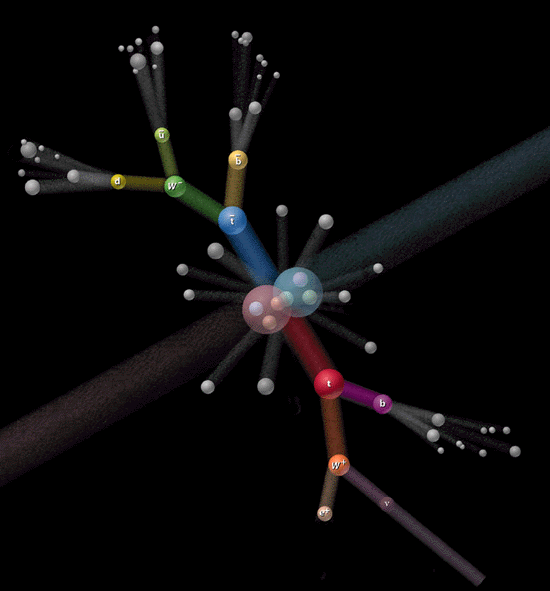Particle physicists working with the BaBar detector at Stanford Linear Accelerator Center have discovered a new particle in the bottomonium family of "quarkonium" particles. Technically it isn't a "new particle" it is a
previously unobserved state of particle
, but when we are talking about subatomic particles, their energy states become a big deal (and their names get very cool). We are in the realms of the vanishingly small and the discovery of the lowest energy bottomonium particle may not seem very significant. But in the world of quantum chromodynamics, this completes the long quest to find experimental evidence for this elusive meson and may help explain why there is more matter than anti-matter in the Universe...
Quarkonia are types of mesons containing two quarks: one quark and its anti-quark (they are therefore "colourless"). They belong to one of two families: "bottomonium" or "charmonium". As the names suggest, bottomonium contains a bottom quark and anti-bottom quark; charmonium contains a charm quark and anti-charm quark. Groups of three quarks (interacting via the strong force) are
baryons
(i.e. protons and neutrons) whereas groups of two quarks are
mesons
. Mesons are all thought to be made from a quark-antiquark pair and are therefore of huge importance when studying why there is more matter than anti-matter in the Universe.
This is where the
BaBar detector at the Stanford Linear Accelerator Center (SLAC), CA,
comes in. The BaBar international collaboration investigates the behaviour of particles and anti-particles during the production of the bottomonium meson (bottom-antibottom quark pairs) in the aim of explaining why there is an absence of anti-particles in everyday life.
- From the .
All matter has a "ground state", or the lowest energy the system is trying to attain. As particles for instance try to reach this ground state, they lose energy, often in the form of electromagnetic radiation. Once reached, the ground state determines the baseline at which measurements can be made for higher energy states of those particles. And this is what the BaBar team has done, they have been able to isolate the lowest possible energy state for the bottomonium particle (which is far from easy). So what have they named the ground state of bottomonium? Quite simply:
ηb
, pronounced "
eta-sub-b
".
The bottomonium particle was generated during a collision between an electron and positron. The energy generated by this collision created a bottom quark and an anti-bottom quark bound together. At this point, the bottomonium particle was of too high an energy, but it very quickly decayed, emitting a gamma ray leaving the ηb behind. However, ηb's are highly unstable and will quickly decay into other particles, plus they are very rare and difficult to detect. This particular decay event only occurs once in every two or three thousand higher energy bottomonium decays, so many collisions had to be measured and a huge amount of data had to be gathered by the BaBar detector before a precise measurement of the ηb ground state could be gained.
" " - Hassan Jawahery, BaBar Spokesperson, University of Maryland.
If you want to find out more, you can check out the BaBar team's publication (with the longest list of co-authors I've ever seen!) or the
SLAC press release
.
Source:
SLAC
 Universe Today
Universe Today
